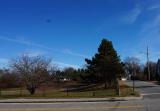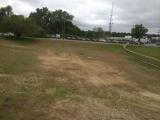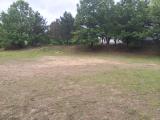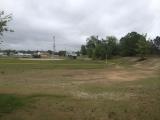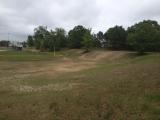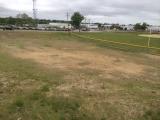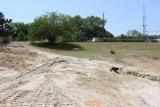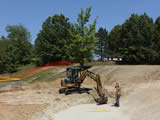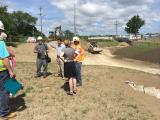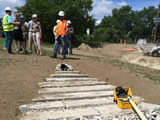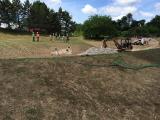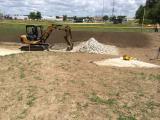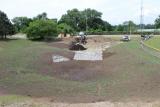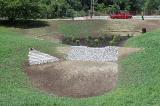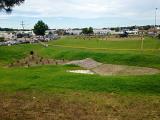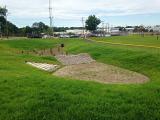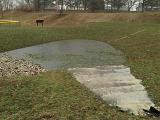Providence, RI Green Infrastructure Project
Background/Location
In 2014, the United States Environmental Protection Agency (EPA) partnered with the City of Providence, the Rhode Island Department of Environmental Management (RIDEM) and other stakeholders for a project to construct a bio-infiltration system at J.T. Owen's Park near Mashapaug Pond. Bio-infiltration is a green infrastructure (GI) best management practice (BMP) for stormwater control. Green infrastructure is stormwater management approach that takes advantage of natural processes to capture and treat stormwater volume and pollutants. The Mashapaug project is a retrofit project and included a public outreach component to showcase the project and engage the community.
An important goal of this project was to introduce municipal officials and other public and private stakeholders to GI as a practical and effective technique to reduce stormwater runoff and pollution, improve water quality and recharge groundwater.
The bio-infiltration BMP:
- leads to improved water quality in Mashapaug Pond;
- increases public and private awareness of GI as an effective approach for municipal stormwater management;
- engages and educates local department of public works engineers and other municipal officials how GI can be a viable and effective control for stormwater; and
- engages Project Partners to understand and implement operation and maintenance (O&M) procedures to ensure the BMP continues to operate into the foreseeable future.
The bio-infiltration BMP was constructed on the J.T. Owens Park, which is situated on Mashapaug Pond, a waterbody listed as impaired for nutrients. The Pond feeds into Roosevelt Lake, part of the interconnected pond system created in Roger Williams Park at the end of the 19th century, and its input contributes to severe water quality problems in those ponds as well. The bio-infiltration BMP was sited adjacent to the existing Little League baseball fields which are located near Mashapaug Pond.
Construction of the bio-infiltration BMP entailed installing a flow diversion structure into the municipal separate storm sewer system (MS4) line located near the Niantic Ave and Swanson St. intersection to divert up to approximately 1 to 1.2 inches of SW runoff from about 2.6 acres of impervious cover (~85,000 gallons) from the 6.5-acre drainage area to the bio-infiltration retrofit located at the southern/far edge of the Little League ballfields. Prior to the construction of the GI BMP, runoff from the entire 6.5 acre drainage area, would ordinarily discharge to Mashapaug Pond, an impaired waterbody with a Total Maximum Daily Load (TMDL). A TMDL is a regulatory term in the U.S. Clean Water Act, describing a plan for restoring impaired waters that identifies the maximum amount of a pollutant that a body of water can receive while still meeting water quality standards.
The photograph below identifies where the Bio-Infiltration BMP Retrofit was sited near the J.T. Owens ballpark, and the cross-section further below illustrates the general design for the BMP.
Location of the GI BMP at J.T. Owens Ballpark
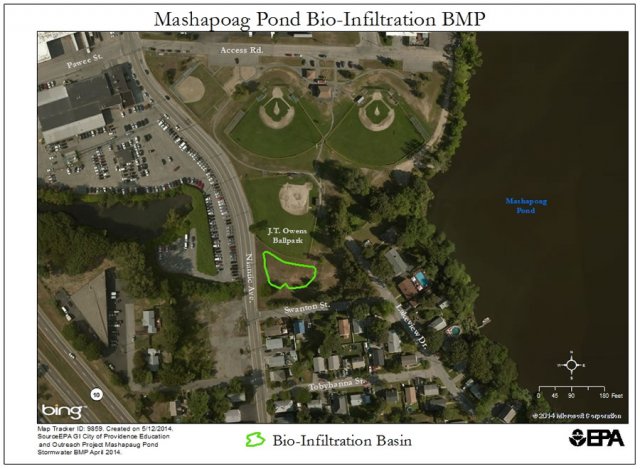
Green Infrastructure BMP Design
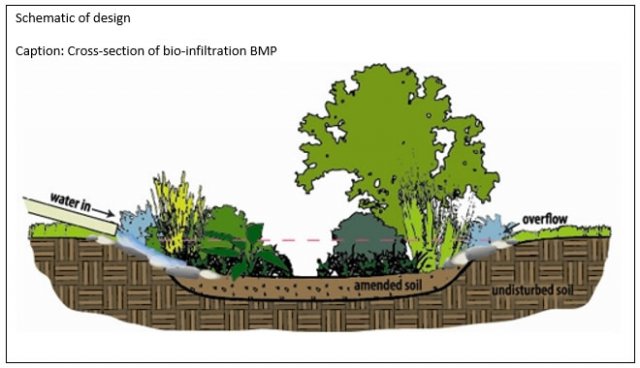
- February 12, 2014 Project Kickoff Meeting (pdf)
- BMP Design Documents
- April 15, 2014 Community Meeting Presentation (pdf)
BMP Status and Performance
Design and construction of the BMP Retrofit took place over the period of January through June 2014. Construction included site grading, road utility and pipe work, and landscaping.
As of Summer 2017, the BMP has been in operation for three years, and based on engineering calculations, has reduced surface runoff discharges to Mashapaug Pond by an estimated 10.5 million gallons (85% reduction) and an estimated reduction of 16 pounds of phosphorus (95% reduction) (a nutrient pollutant that contributes to algae blooms).
In addition, the BMP prevents the discharge of other pollutants to Mashapaug Pond, such as sediment, bacteria, temperature (heat) and nitrogen, and serves to recharge and replenish groundwater. During the three years of operation, the GI infiltration BMP is estimated to have recharged approximately 10 million gallons of water into the subsurface soils.
It is important to highlight that although this BMP retrofit was located in a high-density urban residential area, it was possible to design the BMP to capture and treat an approximate 1 to 1.2 inch storm event. Most storms in New England, however, are much smaller (as the Figure below illustrates).

This Figure above indicates that as much as 39% of all New England storm events are less than 0.2 inches and 66% of all storm events are less than 0.5 inches. Because most storm events in New England are small, BMPs designed for as little as 0.1 to 0.3 inches of runoff depth can capture disproportionately higher nutrient loads from impervious cover (IC), as the following graph depicts.
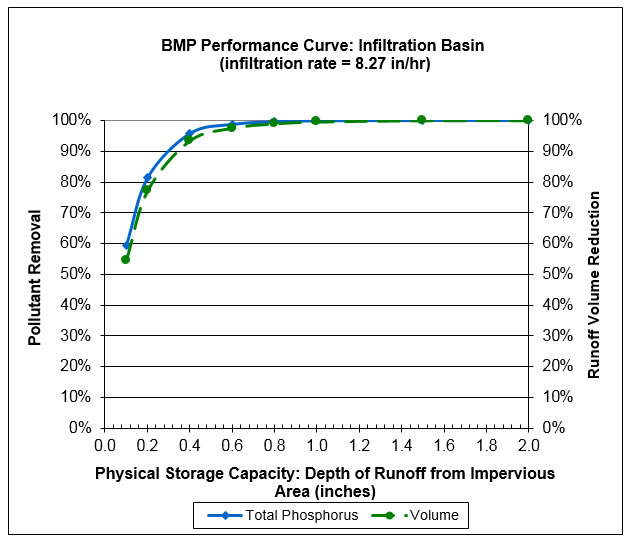
The graph above most closely matches the infiltration rate of the soils in and under the J.T. Owens BMP retrofit, and indicates that for similar soils, as much as 72% of the available phosphorus load may be captured and treated by a BMP retrofit as small as only 0.2 inches of runoff depth from impervious area.
This is a highly significant observation for geographically-constrained environs, such as urban environs within New England - and suggests that BMP retrofits, although typically more costly compared to other BMPs (because of site constraints and construction logistics and uncertainties), may indeed be cost competitive with larger systems, such as those required to meet a minimum of one (1) or more inches of water quality volume (e.g., new development or redevelopment projects that trigger stormwater requirements).
In addition, smaller systems can be more strategically sited near water bodies just prior to where stormwater discharges from MS4 systems, such as this BMP retrofit.
Smaller BMPs, strategically situated within any watershed, subwatershed, MS4 catchment or subcatchment may therefore represent a best technical and cost-effective approach for achieving nutrient load reductions.
Photos
Before Construction (Fall 2013):
During Construction
After Construction
BMP In Operation
Contacts
Technical Contact
Ray Cody ([email protected])
(617) 918-1366
Education & Outreach Contact
Caitlyn Whittle ([email protected])
(617) 918-1748
Karen Simpson ([email protected])
(617) 918-1672
Additional Resources/Links
- Narragansett Bay Program
The Narragansett Bay Program protects and restores the bay watershed - Rhode Island Bays Rivers, and Watersheds Coordination Team
The Rhode Island Bays Rivers, and Watersheds Coordination Team protects, manages, and restores Rhode Island's waters and watersheds - Urban Pond Procession
Learn how the Urban Pond Procession is using art and environmental education to protect ponds in Cranston and Providence, RI - Environmental Justice League of Rhode Island
The Environmental Justice League of Rhode Island promotes environmental justice in RI - Soak Up the Rain
Learn more about Low Impact Development and community projects by checking out EPA's Soak Up the Rain Campaign website - University of New Hampshire's Stormwater Center
University of New Hampshire's Stormwater Center is a resource for information on porous pavement and other low-impact development methods - University of Connecticut's Nonpoint Education for Municipal Officials (NEMO) Program
Local land use officials addressing the relationship of land use to natural resource protection can learn more about low-impact development for stormwater management through The University of Connecticut's Nonpoint Education for Municipal Officials (NEMO) program

